The outline given by the stars indicates a straight
horizontal line ('latitude') from Canopus (365, α) to Drus (270, χ)
|
THE OAK KEEL |
|
Canopus |
α |
365 |
52° 40′ S |
-0.72 |
95 |
|
Drus |
χ |
270 |
52° 59′ S |
3.46 |
and we could count 365 - 270 = 95 as a measure equal to (for
instance) the
right ascension day distance from 0h
to Canopus (according to my assumed epoch for rongorongo).
Thus Drus and Canopus should belong together, for 2 points
(twin stars) were always needed
in order to take (merkhet) a prop(p)er measurement (me).
But beyond Drus the direction of the hull of
Argo Navis went
downwards, establishing a kind of implicit similarity with the fate of the
Crocodile Canoe
- i.e. the Milky Way as it had been perceived by the Mayas just
before the dawn of August 13 (225) AD 690:
.jpg)
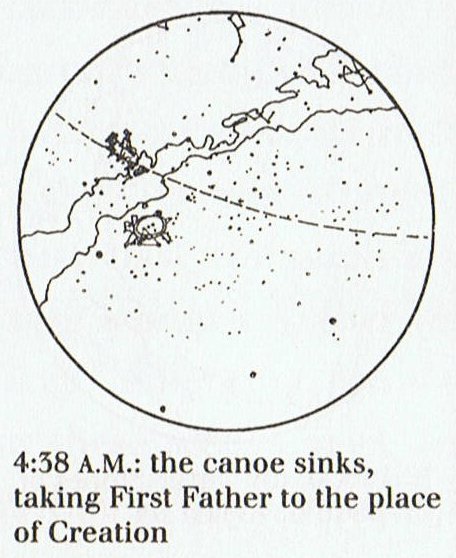
|
MAY 14 |
15 (365 + 135
= 500) |
16 (136) |
 |
 |
 |
|
Ga2-24 |
Ga2-25 → Aug
13 4:38 a.m. |
Ga2-26 |
|
φ Gemini
(118.4)
*77.0 =
*118.4 - *41.4 |
DRUS (*95 + *24) |
ω Cancri
(120.2) |
|
The difference between the
measure 24
...
from *95 (Canopus) to *380 (1h) there were *285
(= 364 - 79) right ascension days. (25h / 24h =
ca 1.04 (= 8 * 13 / 100) ...
and the measure 95
...
From FEBRUARY 1 to JANUARY 31 there were 365 days. From January
1 to April 5 there were 365 + 95 = 460 days ...could (for instance) be explained
as due to the precession since the time when our
present world had been created. 95 - 24 = 71, which
is 1 more than 10 weeks:
(3112 BC + AD 1842) * 365.25 / 26000 = 70 → 10
weeks
... Another name for Mercury was Hermes and
Hermes Trismegisthos (thrice-mighty) could
have referred to the fact that there were 3.14 *
115.88 = 364.0 days for the cycle of the Earth
around the Sun. Although the calendar has 365
days for a year this is due to the fact that the
Earth has to turn around an extra day in order
to compensate for how the direction to the Sun
changes during a year
... |
|
Drus → L. dūrus = hard (as oak)
... The seventh tree is the
oak, the tree of Zeus, Juppiter, Hercules, The
Dagda (the chief of the elder Irish gods), Thor,
and all the other Thundergods, Jehovah in so far
as he was 'El', and Allah. The royalty of the
oak-tree needs no enlarging upon: most people
are familiar with the argument of Sir James
Frazer's Golden Bough, which concerns the human
sacrifice of the oak-king of Nemi on Midsummer
Day. The fuel of the midsummer fires is always
oak, the fire of Vesta at Rome was fed with oak,
and the need-fire is always kindled in an
oak-log. When Gwion writes in the Câd Goddeu,
'Stout Guardian of the door, His name in every
tongue', he is saying that doors are customarily
made of oak as the strongest and toughest wood
and that 'Duir', the Beth-Luis-Nion name for
'Oak', means 'door' in many European languages
including Old Goidelic dorus, Latin foris, Greek
thura, and German tür, all derived from the
Sanskrit Dwr, and that Daleth, the Hebrew letter
D, means 'Door' - the 'l' being originally an
'r'. Midsummer is the flowering season of the
oak, which is the tree of endurance and triumph,
and like the ash is said to 'court the lightning
flash'. Its roots are believed to extend as deep
underground as its branches rise in the air -
Virgil mentions this - which makes it emblematic
of a god whose law runs both in Heaven and in
the Underworld ... The month, which takes its
name from Juppiter the oak-god, begins on June
10th and ends of July 7th. Midway comes St.
John's Day, June 24th, the day on which the
oak-king was sacrificially burned alive. The
Celtic year was divided into two halves with the
second half beginning in July, apparently after
a seven-day wake, or funeral feast, in the
oak-king's honour ... |
|
July 17 |
18 |
19 (200 = 136
+ 64) |
|
°July 13 |
14 |
15 (196) |
|
'June 20 |
SOLSTICE |
22 (173) |
|
"June 6 |
7 |
8 (159) |
|
Itzam-Yeh
defeated |
28 May (148),
3149 BC |
|
1st 3-stone
place |
21 May (141),
3114 BC |
|
Creation of
our present world |
13 August
(225), 3114 BC |
|
Och ta chan
(Hun-Nal-Ye 'entered or
became the sky') |
5 February
(36), 3112 BC |
|
21 May, 3114
BC - 5 February, 3112 BC =
542 |
|
542 'happens
to be' the sum of 365 days
and 6 * 29½ nights. |
|
|
... A
sidelight falls upon the notions connected with
the stag by Horapollo's statement concerning the
Egyptian writing of 'A long space of time: A
Stag's horns grow out each year. A picture of
them means a long space of time.' Chairemon
(hieroglyph no. 15, quoted by Tzetzes) made it
shorter: 'eniautos: elaphos'. Louis
Keimer, stressing the absence of stags in Egypt,
pointed to the Oryx (Capra Nubiana) as
the appropriate 'ersatz', whose head was,
indeed, used for writing the word rnp =
year, eventually in 'the Lord of the Year', a
well-known title of Ptah. Rare as this modus of
writing the word seems to have been - the
Wörterbuch der Aegyptischen Sprache (eds.
Erman and Grapow), vol. 2, pp. 429-33, does not
even mention this variant - it is worth
considering (as in every subject dealt with by
Keimer), the more so as Chairemon continues his
list by offering as number 16: 'eniautos:
phoinix', i.e., a different span of time,
the much-discussed 'Phoenix-period'
(ca. 500 years) ...
 |
|
MAY 17 |
2 |
20
(140) |
39 |
JUNE 29 |
30 (181) |
JULY 1 |
2 |
3 (248 - 64) |
 |
 |
 |
 |
 |
 |
 |
|
Ga2-27 → π |
Ga3-1 (60) |
Ga4-17 |
Ga4-18 |
Ga4-19 |
Ga4-20 |
Ga4-21 (104) |
|
July 20 |
23 (204) |
Sept 1 |
2 |
3 |
4 |
5 (104 + 144) |
|
NAOS
8h |
AL TARF (The End)
RAS ALGETHI
|
no star listed
ALTAIR
|
ALKES |
DUBHE |
*167 |
AL SHARAS (The Ribs) |
|
Jan 19 |
22 (204 + 183) |
March 3 |
4 (63) |
5 |
6 |
7 |
|
20h (*304.4) |
GREDI,
ALSHAT |
FOMALHAUT |
*348 |
*349 |
MAN WITH 2 FACES |
SIMMAH (*351.7) |
|
NOV 16 (320) |
19 (*243) |
DEC
29 |
30 (364) |
31 (*285) |
JAN 1 |
2 |
|
48 |
|
... According to a variety of
sources of the legend, the Argo was said to
have been planned or constructed with the help of
Athena. According to other legends it contained
in its prow a magical piece of timber from the
sacred forest of Dodona, which could speak
and render prophecies.
Argo Navis is the only
one of the 48 constellations listed by the 2nd
century astronomer Ptolemy that is no longer
officially recognised as a constellation. It was
unwieldy due to its enormous size: were it still
considered a single constellation, it would be the
largest of all. In 1752, the French astronomer
Nicolas Louis de Lacaille subdivided it into
Carina (the keel, or the hull, of the ship),
Puppis (the poop deck), and Vela (the
sails). When Argo Navis was split, its Bayer
designations were also split. Carina has the
α, β
and ε, Vela has
γ and δ,
Puppis has ζ, and
so on. The constellation Pyxis (the mariner's
compass) occupies an area which in antiquity was
considered part of Argo's mast (called
Malus). However, Pyxis is not now
considered part of Argo Navis, and its Bayer
designations are separate from those of Carina,
Puppis and Vela ... |
Here it must be mentioned that in the C text we can find a
quite rare phenomenon - a glyph
which is very similar to a glyph in the G text. The common
denominator was evidently Aquila:

|
 |
*120
τ Aquilae
(*303) |
MAY 16 (136 =
200 - 64)
Jan 18 (383) |
|
Ga2-26 |
|
 |
ALTAIR (*300)
*117 |
Jan 15 (380)
MAY 13 (133) |
|
Cb4-20 |
|

... Moon returns to the same place in the sky
after about 24 hours and 50 minutes, which means
the tidal period will be half as long (12 hours
and 25 minutes) ...
24h 50' corresponds to (24 + 50/60) * 365¼
/ 24 = ca 380 right ascension days (= 364 + 16).
Presumably the difference between 380 (Moon) and
364 (Sun) - which happened to correspond to the
difference between when the star returned to
visibility and its true heliacal position -
motivated the addition of an extra cycle ... |
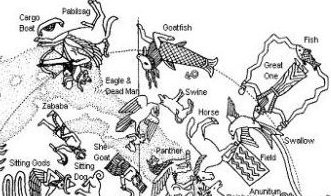

Possibly it was a coincidence, but we should not avoid
noticing the resemblance between the name Cargo
Boat and the Boat Argo.
Word play was an integral part of the game - necessary
for supporting the whole and for making it into an 'implex',
a complex structure of associations - beautiful and
loaded with meaning.
... Language forms an excellent
defense against the kind of misuse which Plato speaks
about with surprising earnestness in Phaedrus
...
... The mythic landscape was an
'implex', by which term is meant a world of
implications.
... Fanciful, assuredly, but
neither the Milky Way nor the terrestrial Ganges offered
any basis for the imagery of a river flowing to the four
quarters of the earth 'for the purification of the three
worlds'. One cannot get away from the 'implex' and it is
now necessary to consider the tale of a new skeleton
map, alias skambha: the equinoctial colure had shifted
to a position where it ran through stars of Auriga and
through Rigel. Skambha, as we have said, was the World
Tree consisting mostly of celestial coordinates, a kind
of wildly imaginative armillary sphere. It all had to
shift when one coordinate shifted ...

... In late September or early
October 130, Hadrian and his entourage, among them
Antinous, assembled at Heliopolis to set sail upstream
as part of a flotilla along the River Nile. The retinue
included officials, the Prefect, army and naval
commanders, as well as literary and scholarly figures.
Possibly also joining them was Lucius Ceionius Commodus,
a young aristocrat whom Antinous might have deemed a
rival to Hadrian's affections. On their journey up the
Nile, they stopped at Hermopolis Magna, the primary
shrine to the god Thoth. It was shortly after this, in
October [in the year A.D.] 130 - around the time of the
festival of Osiris - that Antinous fell into the river
and died, probably from drowning. Hadrian publicly
announced his death, with gossip soon spreading
throughout the Empire that Antinous had been
intentionally killed. The nature of Antinous's death
remains a mystery to this day, and it is possible that
Hadrian himself never knew; however, various hypotheses
have been put forward. One possibility is that he was
murdered by a conspiracy at court. However, Lambert
asserted that this was unlikely because it lacked any
supporting historical evidence, and because Antinous
himself seemingly exerted little influence over Hadrian,
thus meaning that an assassination served little
purpose. Another suggestion is that Antinous had died
during a voluntary castration as part of an attempt to
retain his youth and thus his sexual appeal to Hadrian.
However, this is improbable because Hadrian deemed both
castration and circumcision to be abominations and as
Antinous was aged between 18 and 20 at the time of
death, any such operation would have been ineffective. A
third possibility is that the death was accidental,
perhaps if Antinous was intoxicated. However, in the
surviving evidence Hadrian does not describe the death
as being an accident; Lambert thought that this was
suspicious. Another possibility is that Antinous
represented a voluntary human sacrifice. Our earliest
surviving evidence for this comes from the writings of
Dio Cassius, 80 years after the event, although it would
later be repeated in many subsequent sources. In the
second century Roman Empire, a belief that the death of
one could rejuvenate the health of another was
widespread, and Hadrian had been ill for many years; in
this scenario, Antinous could have sacrificed himself in
the belief that Hadrian would have recovered.
Alternately, in Egyptian tradition it was held that
sacrifices of boys to the Nile, particularly at the time
of the October Osiris festival, would ensure that the
River would flood to its full capacity and thus
fertilize the valley; this was made all the more urgent
as the Nile's floods had been insufficient for full
agricultural production in both 129 and 130. In this
situation, Hadrian might not have revealed the cause of
Antinous's death because he did not wish to appear
either physically or politically weak. Conversely,
opposing this possibility is the fact that Hadrian
disliked human sacrifice and had strengthened laws
against it in the Empire
...

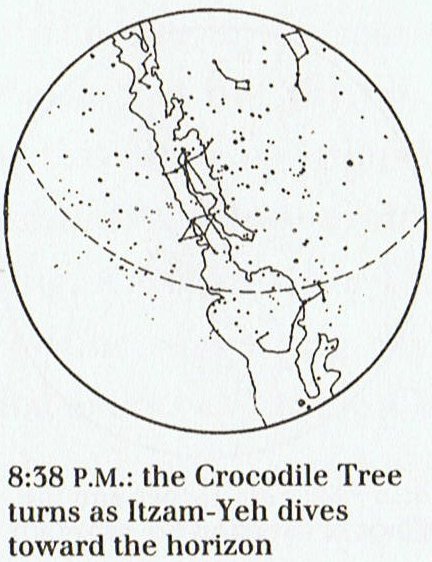
|
... In myth the threads of a
story return to their origin. Our present
story is the Beginning:
The Decree of Canopus is a bilingual
inscription in two languages, and in three
scripts. It was written in three writing
systems: Egyptian hieroglyphs, Demotic, and
Greek, on an ancient Egyptian memorial stone
stele, the Stone of Canopus. The
inscription is a decree by Egyptian priests
honoring Pharaoh Ptolemy III
Euergetes; Queen Berenice, his
wife; and Princess Berenice in 238 BC
...
The inscription touches on subjects such as
military campaigns, famine relief, Egyptian
religion and governmental organization in
Ptolemaic Egypt. It mentions the king's
donations to the temples, his support for
the Apis and Mnevis cults,
which enjoyed huge success in the Macedonian
- Egyptian world, and the return of divine
statues which had been carried off by
Cambyses. It extols the king's success
in quelling insurgencies of native
Egyptians, operations referred to as
'keeping the peace.' It reminds the reader
that during a year of low inundation, the
government had remitted taxes and imported
grain from abroad ...

... It inaugurates the most accurate solar
calendar known to the ancient world, with
365¼ days per year. It declares the deceased
princess Berenike a goddess and
creates a cult for her, with women, men,
ceremonies, and special 'bread-cakes'.
Lastly it orders the decree to be incised in
stone or bronze in both hieroglyphs and
Greek, and to be publicly displayed in the
temples.
The traditional Egyptian calendar had 365
days: twelve months of thirty days each and
an additional five epagomenal days.
According to the reform, the 5-day 'Opening
of the Year' ceremonies would include an
additional 6th day every fourth year. The
reason given was that the rise of Sothis
advances to another day in every 4 years,
so that attaching the beginning of the year
to the heliacal rising of the star Sirius
would keep the calendar synchronized with
the seasons. This Ptolemaic calendar reform
failed, but was finally officially
implemented in Egypt by Augustus in 26/25
BCE, now called the Alexandrian calendar,
with a sixth epagomenal day occurring for
the first time on 29 August 22 BCE.
Julius Caesar had earlier implemented
a 365¼ day year in Rome in 45 BCE as part of
the Julian calendar ...
I think the calendar reform
of Ptolemy III Euergetes hinged on
the myth of the golden tresses of
Berenike (his wife) being placed inside
a sacred 'naos', and remaining there,
in this 'cave', only for a short while
before mysteriously disappearing ...
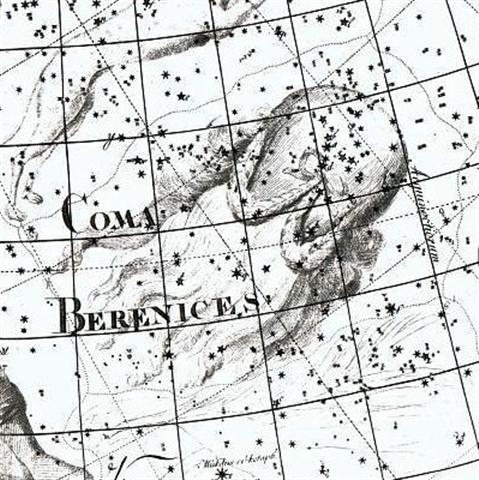 |
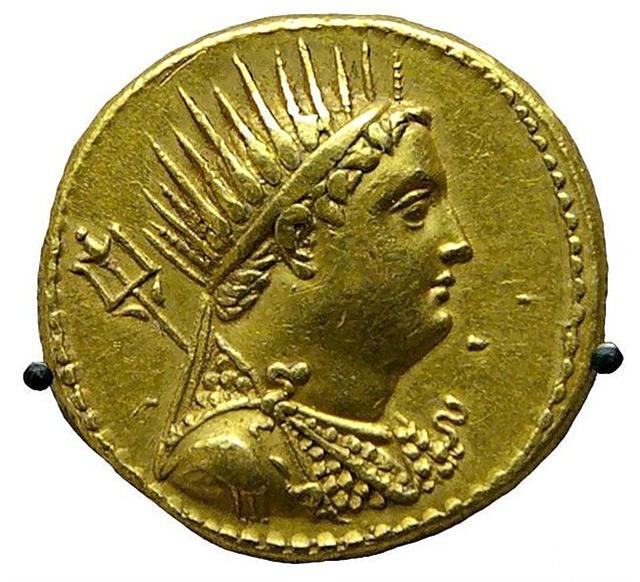
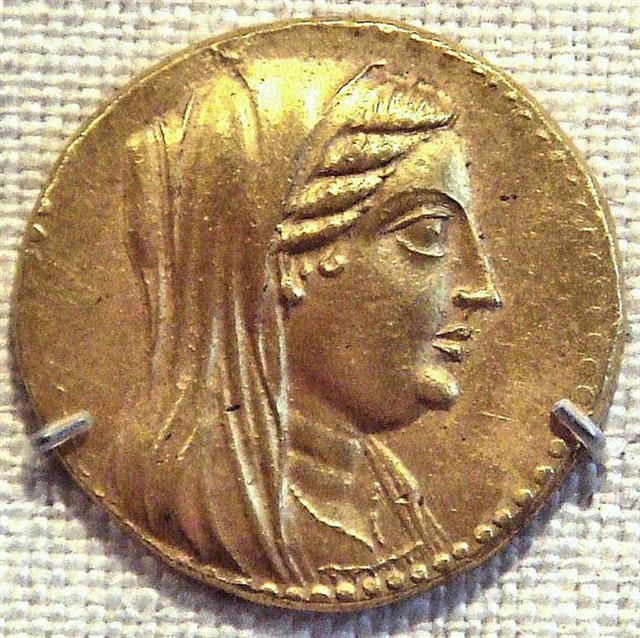
|
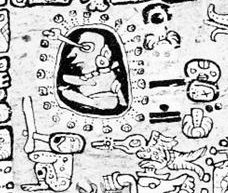

.jpg)


















